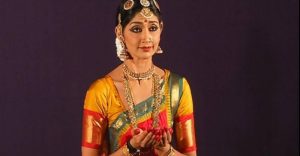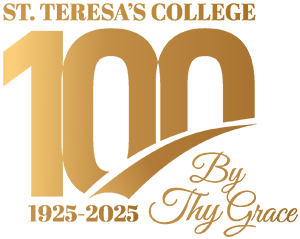M A Bharatanatyam

Bharatanatyam is a solo dance that can be performed by both men as well as women and is believed to be originated in Tamil Nadu. This dance form has a rich history that dates back to about 2000 years. Bharatanatyam is the combination of bhava, raga, tala, and Natya and also is made for the purpose of seeking pleasure.
The main feature of Bharatanatyam is that the dancer makes beautiful straight lines or triangles. Bharatanatyam is supplied by background Carnatic music. This artform itself is divided into two categories which comprise pure dance Nritta and expressional dance Nritya. This dance is flourishing and has large among the one initiated to its cultural concepts.
M A Bharatanatyam Course at St. Teresa’s College
St.Teresa’s provides M A Bharatanatyam course under the department of Bharathnatyam. In order to learn this dance form, there is a need for experience as well as talent. To acquire and perform this dance form just imitating the instructor is not only required but there is a need for involvement of full body and mind of the performer.
As one of the departments in the College, we believe that when we give an opportunity to dance and the attitude to believe in themselves, develop potential through artistic expression. For about 15 years this department is the state of the art of the dance form and also students are prepared for careers in Bharathanatyam. So those who wish to pursue their career in Bharathanatyam, St.Teresa’s is the best option to make their dream come true.
The PG programme in Bharatanatyam includes:
(a) core courses (practical and theory)
(b) Project.
(c) Dissertation /Viva
The 18 core courses in PG programme .6 core theory papers and 12 practical papers, one elective (practical), Dissertation and General Viva in the fourth semester, all together earning 80 credits.
| Eligibility | Index Mark Calculation |
| B A IN BHARATHANATYAM
Candidates who have passed qualifying examination in CBCSS (2009) pattern should possess CGPA of not less than 2.00 out of 4.00 for Core. Candidates who have passed qualifying examination in CBCSS (2013) pattern should possess CGPA of not less than 5.00 out of 10.00 for Core. Candidates who have passed qualifying examination in other patterns should possess not less than 50% marks in Main Relaxation: For SC/ST candidates – The minimum grade in the qualifying examination for admission to the PG Degree programmes is ‘C’ in the seven-point scale for CBCSS and a pass for pre-CBCSS applicants. For OEC candidates – A relaxation of 5% marks in the qualifying examination from the prescribed minimum is allowed i.e., CGPA of 1.80 for CBCSS (2009), CCPA of 4.5 for CBCSS (2013) applicants and 45% marks for pre-CBCSS applicants. For SEBC candidates – A relaxation of 3% marks in the qualifying examination from the prescribed minimum is allowed. i.e., CGPA of 1.88 for CBCSS (2009), CGPA of 4.7 for CBCSS (2013), applicants and 47% marks for pre-CBCSS applicants. For Physically disabled candidates – A relaxation of 5% marks in the qualifying examination from the prescribed minimum is allowed i.e., CGPA of 1.80 for CBCSS (2009), CCPA of 4.5 for CBCSS (2013) applicants and 45% marks for pre-CBCSS applicants. |
CBCSS (2013) New Pattern
A = (GP of Core x Credit of Core )+(GP of Complementary 1 x its credit)+(GP of Complementary 2 x its credit) (Credit of Core )+(Credit of Complementary 1)+(Credit of Complementary 2) B = A x 100 C = GP of Core x 60 D = B+C x 1000 1600 Index Mark = D
CBCSS (2009) Old Pattern A = (GP of Core x Credit of Core )+(GP of Complementary 1 x its credit)+(GP of Complementary 2 x its credit) (Credit of Core )+(Credit of Complementary 1)+(Credit of Complementary 2) B = A x 250 C = GP of Core x 150 D = B+C 1600 x 1000 Index Mark = D Pre-CBCSS Pattern Index Mark = Total marks on 1000+marks of Main on 600 X 1000 1600
Final Index Mark = Index Marks obtained + Bonus (if any)– Penalty (if any) |



